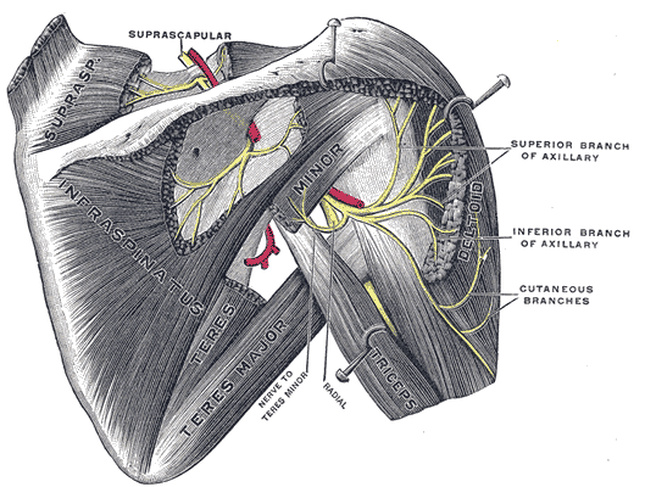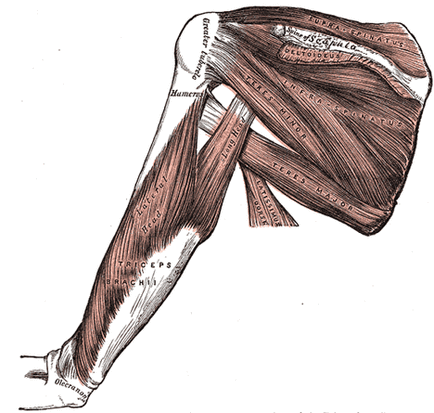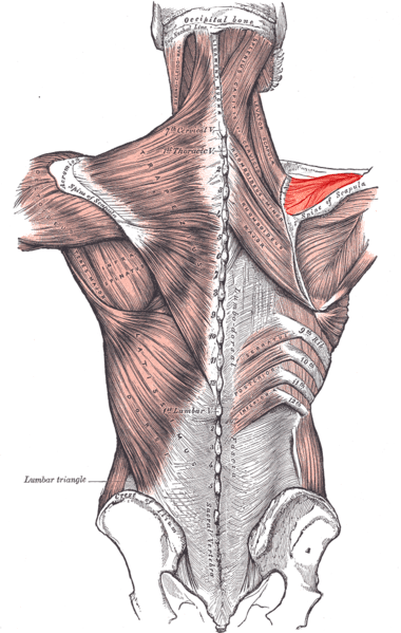SHOULDER TENDINOSIS
ROTATOR CUFF TENDINOSIS / SUPRASPINATUS TENDINOSIS

Rotator Cuff problems are a common cause of shoulder pain in our society. One of the most common things that can go wrong with the Rotator Cuff is Rotator Cuff Tendinosis. Although you may have heard it referred to as Rotator Cuff Tendinitis your whole life, the term “Tendinosis” is much more accurate (see our TENDINOSIS -vs- TENDINITIS page). You should also be aware that much of what is diagnosed as a tendon problem is actually a problem with the Fascia (HERE).
The Rotator Cuff is a group of four muscles (Supraspinatus, Infraspinatus, Teres Minor, and Subscapularis) that surround the shoulder, firing in the specific sequences that allow you rotate your shoulder in all different directions. Because of it’s ability to move in all directions, the shoulder is the most flexible joint in the body. However, in order to achieve such a high level of flexibility, something must be sacrificed, and that something is stability. Increased flexibility, unfortunately, means that the shoulder also holds the dubious distinction of being the most unstable joint in the body as well. This inherent instability puts the shoulder at risk for several bad things (HERE are a couple of others). Some of these are things that I cannot help people with — large bone spurs, dislocations, tears of the labrum, separations, etc.
However, many shoulder problems respond extremely well to the TISSUE REMODELING TREATMENT that I have been doing extensively in my office since Y2K. Some of the shoulder problems I can typically help people with include FASCIAL ADHESIONS, certain types of DEGENERATIVE ARTHRITIS, many cases of impingement, and even some cases of “torn” ROTATOR CUFFS. Not surprisingly, many people who are told they have Rotator Cuff Tears do not need invasive forms of treatment such as Corticosteroid Injections or Surgery (HERE) but can actually get better with conservative treatment.
Although there are four muscles that make up the Rotator Cuff , experts tell us that most cases (research says 95% of the cases) of Rotator Cuff Tendinosis are found in the Supraspinatus Tendon. This is often called “SHOULDER IMPINGEMENT” and unless there are bone spurs that are actually chewing on the muscle, it can frequently be helped with Tissue Remodeling. Bear in mind that I think the 95% figure is too high. Although Supraspinatus Tendinosis is far and away the most common of the Rotator Cuff tendinopathies, I would estimate that 25% of my Rotator Cuff patients I see have a primary Infraspinatus problem. I also run into lots of people who are told their problem is Rotator Cuff, even though what they really have is a BICEPS TENDINOSIS.
Be sure to visit our STRETCHING PAGE as well. This is not a page to show people what I like to refer to as ‘Wellness Stretches”. Although I think regular stretching is a good thing, that is not what this site is all about. Our various Stretching Pages are dedicated to demonstrating stretches specifically for people suffering with various CHRONIC PAIN SYNDROMES — particularly those who have been through Tissue Remodeling.
ROTATOR CUFF ANATOMY
| LEFT ROTATOR CUFF |
 |
| ROTATOR CUFF (SUPRASPINATUS) |
 |
| You can see three of the four muscles that make up the Rotator Cuff. The Subscapularis (not shown) attaches to the under side of the shoulder blade and is rarely injured. Notice that the muscle at the very top is the Supraspinatus. When people talk about Rotator cuff Tendinopathies, you can bet they are talking about Supraspinatus. Teres Minor and Infraspinatus (also Rotator Cuff Muscles) are seen just below the Supraspinatus and Deltoid Muscles. The commonly injured (95% of all Rotator Cuff problems according to official statistics) is colored red. Visit our SHOULDER TESTIMONIAL PAGE for more information. |
